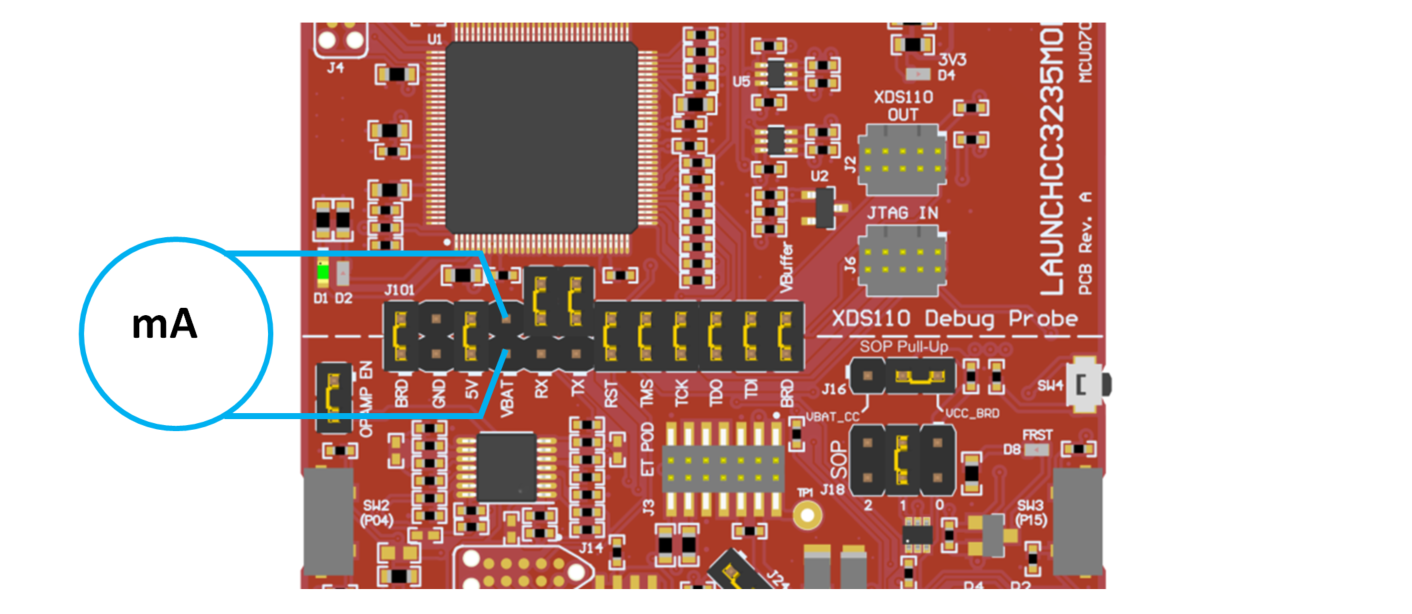SWRU548C February 2019 – September 2021 CC3235MODAS , CC3235MODASF , CC3235MODS , CC3235MODSF
- 1Introduction
-
2Hardware
- 2.1 Block Diagram
- 2.2
Hardware Features
- 2.2.1 Key Benefits
- 2.2.2 XDS110-Based Onboard Debug Probe
- 2.2.3 Debug Probe Connection: Isolation Jumper Block
- 2.2.4 Application (or "Backchannel") UART
- 2.2.5 JTAG Headers
- 2.2.6 Using the XDS110 Debug Probe with a Different Target
- 2.2.7 Power Connections
- 2.2.8 Reset Pullup Jumper
- 2.2.9 Clocking
- 2.2.10 I2C Connection
- 2.2.11 Sense on Power (SOP)
- 2.2.12 Push-Buttons and LED Indicators
- 2.3 Electrical Characteristics
- 2.4 Antenna Characteristics
- 2.5 BoosterPack Plug-in Module Pinout
- 3Layout Guidelines
- 4Operational Setup and Testing
- 5Development Environment Requirements
- 6Additional Resources
- 7Assembly Drawing and Schematics
4.1.1 Low-Current Measurement with USB Power (<1 mA)
See the following instructions to measure ultra-low power when powering with a USB cable.
- Remove the VBAT jumper in the J101 isolation block, and attach an ammeter across this jumper. See Figure 4-2.
- Consider the effect that the backchannel UART and any circuitry attached to the CC3235MOD may have on current draw. Consider disconnecting these at the isolation jumper block, or at least consider their current sinking and sourcing capability in the final measurement.
- Begin target execution and set the device to low-power modes (LPDS or hibernate).
- Measure the current. Remember that if the current levels are fluctuating, it may be difficult to get a stable measurement. It is easier to measure quiescent states. See the "Power Measurement Guide" in CC3135, CC3235x SimpleLink™ Wi-Fi® Internet-on-a chip™ Networking Subsystem Power Management for more current consumption measurement techniques.
 Figure 4-2 Low Current Measurement
Figure 4-2 Low Current Measurement